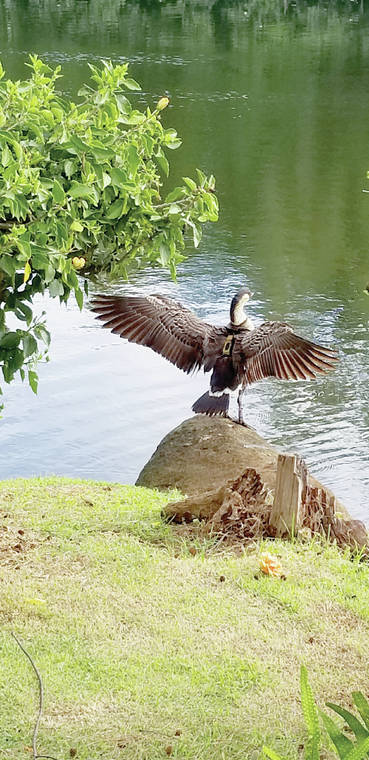HONOLULU — Hawaii’s goose, the nene, has been down listed from endangered to threatened because recovery efforts of the species have been so successful.
The down listing on the Endangered Species List was announced Sunday with officials saying the population has grown from fewer than 30 birds in the wild 50 years ago to more than 3,000 statewide.
Officials hailed it as a national inspiration.
“The recovery of the nene shows how the Endangered Species Act is supposed to work. With a science-based recovery plan and a strong partnership between the state and federal governments, the species has gradually rebounded,” said U.S. Sen. Brian Schatz in a statement about the downlisting.
The Center for Biological Diversity director Maxx Phillips echoed Schatz’ comments and said: “Without this landmark law, wildlife in danger of disappearing forever, like the nene, would have little hope of recovery.”
The nene, the world’s rarest goose, was once abundant across the Hawaiian Islands. Yet by the time it was listed in 1967 due to hunting and introduced predators, the nene teetered on the edge of extinction with just 30 birds left in the wild.
While the downlisting of the nene is cause for celebration, USFW officials and those with the state Department of Land and Natural Resources have said there’s a need for the public to be more vigilant.
More birds means more of a chance for them to be wandering along roadsides or in other places where they could be hit by cars or attacked by dogs.
On Dec. 4, for instance, a driver on Chain of Craters Road in Hawaii Volcanoes National Park hit a nene with their vehicle and it died. It’s partner continued to search for the dead bird along the side of the road, nearly being hit itself.
Nene pair for life and are loyal enough to their partners that they’ll continue to lurk around the area, searching for their perished mate.
That same thing has happened on Kauai, mainly by the Kilauea Point National Wildlife Refuge. Four were killed in that area in October 2017 and USFWS officials then reminded drivers that nene “aren’t like chickens or other birds that move out of the way of your car” — drivers have to wait for them to cross the road.
DLNR points out nesting and mating seasons — usually November through January — make nene particularly vulnerable.


